Dr. Nelson-Field’s thorough analysis reveals that only 9% of ads on extremely dull media advertising formats successfully engage audiences
Every marketer knows the feeling: you’ve crafted the perfect campaign, allocated your budget carefully, and launched with high hopes. But what if nearly half of that investment is simply vanishing into thin air?
New research from Dr. Karen Nelson-Field and Adam Morgan has uncovered a troubling reality about today’s media landscape. Their comprehensive study reveals that dull advertising is costing brands an average of 43 cents on every dollar spent—adding up to $198 billion in wasted media budgets globally.
So what exactly makes media “dull”? It’s advertising that fails to register meaningfully with consumers, slipping past unnoticed in our increasingly cluttered digital world. The research identifies a crucial 2.5-second memory threshold that separates effective advertising from expensive noise.
Dr. Nelson-Field’s team analyzed an impressive dataset—115,000 views across 190 campaigns and 60 different ad formats, spanning everything from connected TV and linear television to social media, gaming, and web platforms. What they discovered was eye-opening: only 9% of ads on extremely dull media formats manage to cross this critical memory threshold.
The study categorizes media into four distinct levels of attention quality:
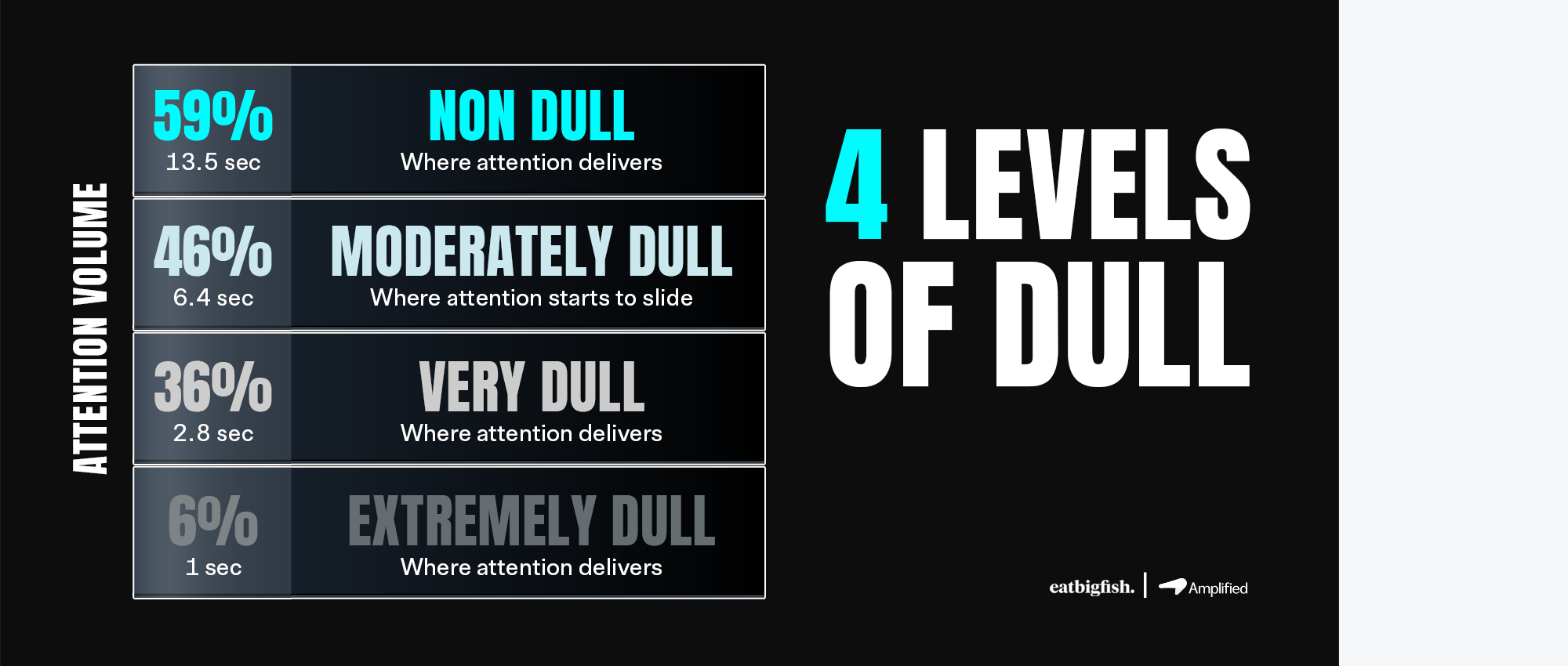
Perhaps most concerning is that extremely dull media represents a full quarter of all available inventory—a significant blind spot that’s quietly draining marketing budgets.
When Dr. Nelson-Field’s research mapped the attention landscape, cinema consistently scored in the “Non Dull” category—but the reasons go beyond simple metrics. The medium taps into a fundamental shift in consumer behavior that most advertisers overlook.
Think about audience psychology: people don’t just stumble into movie theaters the way they might accidentally scroll past your social media ad. They make a deliberate choice to be there, creating what researchers call “intentional engagement.” This psychological readiness means your message reaches audiences who are already primed to absorb content, rather than fighting for attention alongside notification pings and competing browser tabs.
The big screen format amplifies this advantage. Epic scale visuals, immersive sound, and communal viewing create an emotional resonance that’s difficult to replicate in other channels. Your brand message doesn’t just get seen—it gets experienced in a way that builds lasting memory.
Dr. Nelson-Field puts it succinctly: “Attention volume is more than a viewability upgrade—it is the best predictor of ROI that we’ve seen.” For brands looking to maximize their media investment, this insight is particularly valuable.
Cinema delivers the kind of quality attention that drives results. While other channels struggle with distraction and ad avoidance, cinema audiences are already in a receptive mindset, ready to engage with the content—including your advertising.
In an era where marketing budgets face increasing scrutiny and every dollar must demonstrate clear value, cinema represents a strategic opportunity. Rather than competing for fleeting attention in oversaturated digital spaces, brands can invest in a medium that consistently delivers engaged audiences.
The research makes a compelling case: when the difference between campaign success and waste comes down to attention quality, choosing cinema means choosing to be remembered rather than ignored.
Source: Warc
Why Edgar Wright’s dystopian thriller ‘The Running Man’ could be the perfect post-summer blockbuster for theaters
Action has long been the favorite genre of the region, and summer 2025 has been a banner season for action cinema. Mission: Impossible – The Final Reckoning delivered Tom Cruise’s signature thrills to critical acclaim, earning $576 million worldwide, while F1 raced past $293 million globally in its opening weeks. But as the summer winds down, theaters are already eyeing the next big draw—and Edgar Wright’s The Running Man is generating serious buzz as a potential game-changer.
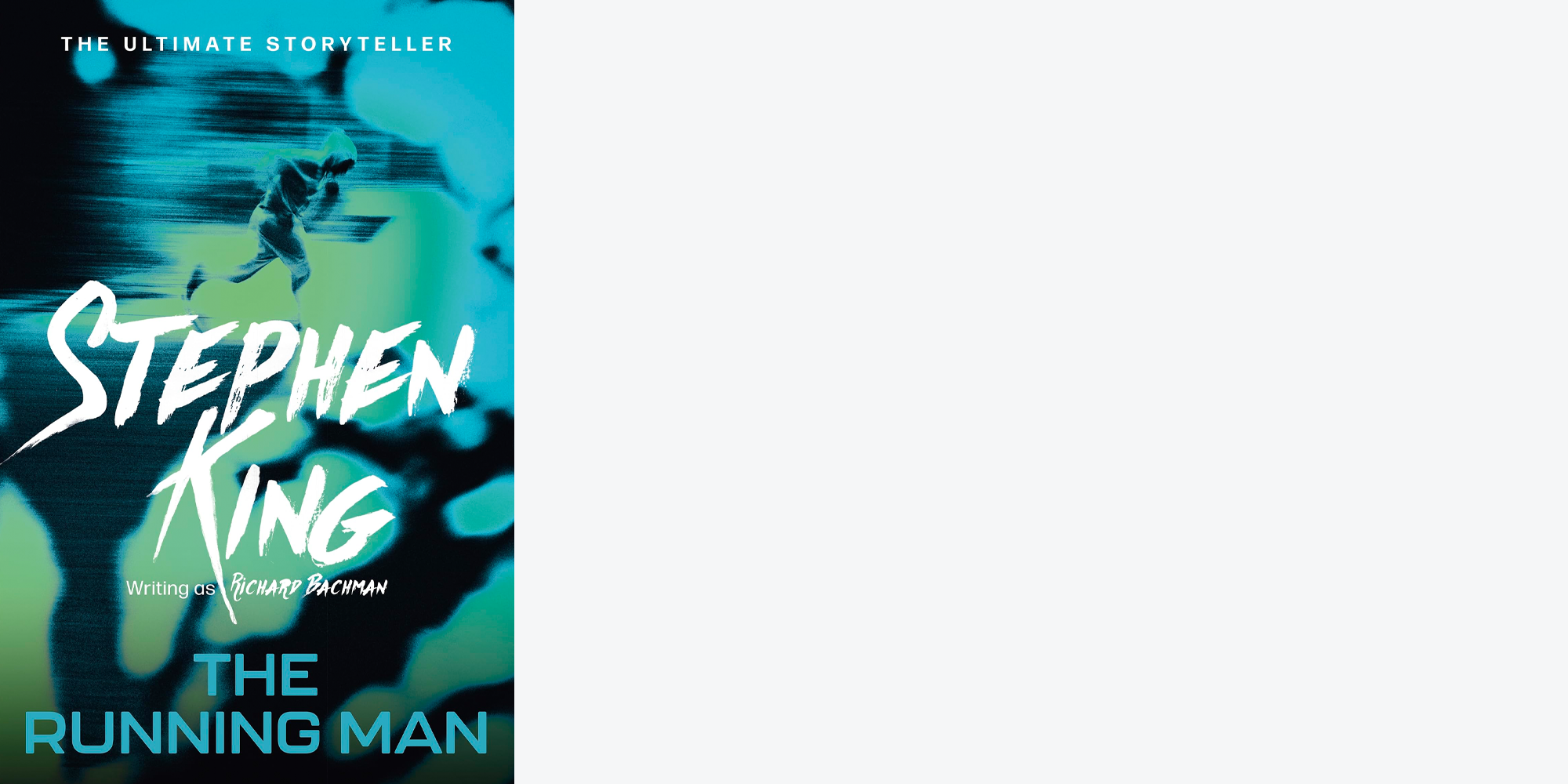
The Running Man has quite the pedigree. Originally published in 1982 under Stephen King’s pseudonym Richard Bachman, the novel painted a dark vision of 2025 America—a polluted, totalitarian society where desperate citizens compete in deadly game shows for survival. The story’s first Hollywood adaptation came in 1987 with Arnold Schwarzenegger, but it took considerable liberties with King’s source material, transforming a gritty thriller into campy ’80s action entertainment.
Now, nearly four decades later, Wright is bringing the story back to screens with a fresh approach. Rather than remaking the Schwarzenegger film, Wright and co-writer Michael Bacall are returning to King’s original novel for inspiration—and the timing couldn’t be more perfect, given that the book’s fictional 2025 setting is essentially our present day!
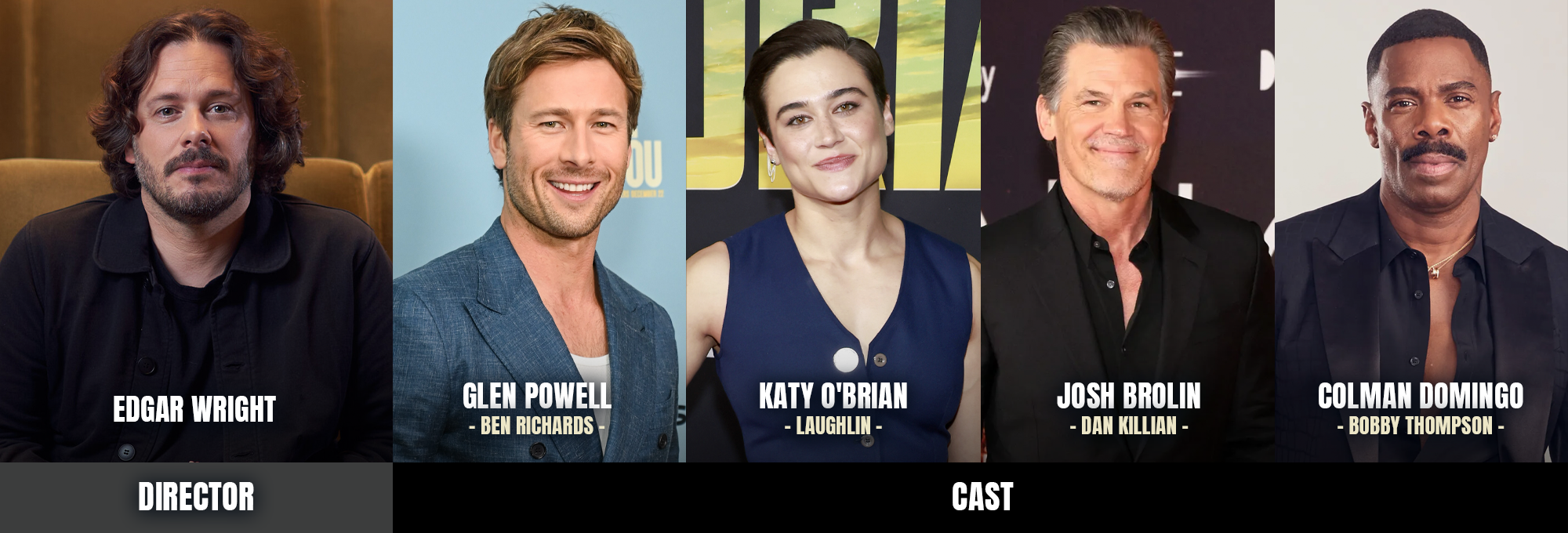
Glen Powell leads the cast as Ben Richards, the everyman forced into the deadly competition. Powell’s rising star power—from scene-stealing moments in Top Gun: Maverick to his growing action credentials—makes him an ideal choice for this high-stakes role. Schwarzenegger himself has given his blessing to Powell’s casting, passing the torch to the next generation.
The supporting cast reads like a who’s who of contemporary talent. Colman Domingo takes on the charismatic game show host role, bringing his dramatic gravitas to what promises to be a deliciously villainous performance. Josh Brolin anchors the film as the ruthless producer orchestrating the deadly spectacle, while Lee Pace commands attention as one of the pursuing “Hunters.”
What makes this casting particularly exciting is the range of talent involved. From comedy veterans like Michael Cera and William H. Macy to rising stars like Emilia Jones and Jayme Lawson, the ensemble promises the kind of chemistry that elevates action films from mere spectacle to memorable entertainment.
Edgar Wright brings his signature blend of kinetic action and dark comedy to the project. Known for films like Baby Driver and the Cornetto Trilogy, Wright has described The Running Man as a “dystopian black comedy action film”—a tonal balance that promises both thrills and satirical bite.
This version expands the game’s scope beyond the confined arena of the 1987 film. True to King’s novel, the entire world becomes the hunting ground, with our protagonist evading capture across a global landscape where anyone could turn him in for a reward. It’s a premise that amplifies both the action possibilities and the social commentary inherent in the story.
The film’s first trailer, released in July 2025, generated immediate excitement across social media platforms. The nearly three-minute preview showcased Wright’s stylish approach while maintaining the story’s darker themes. Explosive city blocks erupting in flames, slick hand-to-hand combat sequences, and Wright’s trademark quick-cut editing style created a visual feast that had fans dissecting every frame. The trailer’s blend of neon-soaked dystopian imagery and Powell’s surprisingly lighthearted quips struck exactly the right tone.
Industry observers noted the trailer’s effective blend of explosive action sequences and Wright’s characteristic wit. The tagline “Millions hunt. One runs. Everyone watches” perfectly captures both the story’s survival thriller elements and its media satire—themes that resonate strongly in our current entertainment landscape.
All this excitement translates into serious business potential for exhibitors. Paramount Pictures is betting big on the project, strategically timing the November 6, 2025 release to secure optimal IMAX positioning without direct competition from other major action tentpoles. With established IP, a proven director, and strong cast, it has the essential ingredients to become a must-see theatrical event.
It’s neither a sequel nor a superhero story, but rather a fresh take on established material with contemporary relevance. The Running Man offers the kind of original-yet-familiar entertainment that drives audience excitement.
The combination of Wright’s proven track record, Powell’s rising star power, and the story’s timely themes creates a compelling package for exhibitors. In an era where theatrical experiences need to offer something special, The Running Man promises the kind of kinetic, visually spectacular entertainment that belongs on the big screen.
With its November release approaching, this could be the post-summer action hit that keeps theaters buzzing well into the awards season. For cinema advertising, that’s the kind of sustained audience engagement that makes a film truly valuable—not just a weekend winner, but a genuine cultural moment worth experiencing in theaters.
With stunning scenes filmed in Abu Dhabi, F1: The Movie Middle East box office numbers are soaring—much like the sport’s growing popularity in the region.
Apple Original Films’ eagerly anticipated F1: The Movie, starring Brad Pitt and directed by Joseph Kosinski, has delivered an electrifying opening weekend at the global box office, becoming a historic milestone for the studio and the genre alike.
Racing to an extraordinary $144 million worldwide in its first four days, F1: The Movie proved that when premium content meets the right platform, audiences respond in unprecedented ways. The film’s domestic performance was nothing short of impressive, capturing $55.6 million domestically (US & Canada), while international markets contributed $88.4 million to boost the global tally.
But here’s where the story gets truly electrifying: these figures represent more than just solid box office performance—they’re rewriting the record books. Apple has officially crowned its new champion, with F1: The Movie speeding past previous theatrical releases like Killers of the Flower Moon and Napoleon to claim the studio’s highest-grossing opening weekend. For Brad Pitt, this marks a career milestone, surpassing even the zombie-fueled success of World War Z to become his biggest global launch ever.
The film now leads an entire genre, setting the record for the largest-ever opening weekend for a live-action motorsports film, outperforming acclaimed titles like Ford v Ferrari and Talladega Nights.
What’s driving this phenomenal success? It’s the perfect blend of star power, adrenaline-pumping action, and compelling storytelling—all delivered through Kosinski’s masterful direction, the same visionary behind Top Gun: Maverick’s soaring success.
Apple’s marketing strategy was equally sophisticated, with innovative tactics like haptic trailer technology serving as standout elements in a comprehensive campaign that created buzz by transcending traditional promotional boundaries.
The film’s global triumph has found particularly fertile ground in international markets, with standout performances across China, India, Mexico, and Australia. However, it is in the Middle East where F1: The Movie truly finds its home track.
The UAE, Saudi Arabia, and Bahrain spearheaded the region’s exceptional enthusiasm for the film—and for good reason. With significant portions filmed at Abu Dhabi’s iconic Yas Marina Circuit, the movie speaks directly to regional audiences who have witnessed Formula 1’s explosive growth in the region. This authentic connection between the film’s setting and its audience creates a perfect storm of engagement and cultural relevance.
According to Motivate Val Morgan’s comprehensive cinema admissions reporting platform, CineMeasure, the results speak volumes: over 270,000 admissions across our regional circuit during its initial four‑day run secured the coveted number-one position for the weekend. This success reinforces cinema’s unique power to maximize audience connection with premium storytelling.
Building on a season already packed with major releases, F1: The Movie joins the ranks of summer blockbusters such as Marvel’s Thunderbolts*, Mission Impossible: The Final Reckoning, Lilo & Stitch, A Minecraft Movie, and Arabic hits like Asaf and Siko Siko, all fueling exceptional momentum across the region. The Motivate Val Morgan circuit has now reached 16.5 million admissions as of June 2025. With highly anticipated titles including Superman, Fantastic Four: First Step, and Jurassic World: Rebirth still to come, this remarkable box office streak shows no signs of slowing down.
These impressive admissions figures across the region reflect not just enthusiasm for premium content but also underscore the strategic value of the cinema medium itself, which continues to capture audience attention and deliver engagement levels unmatched by other entertainment forms. Cinema remains uniquely positioned as the only premium platform where high-caliber content like F1: The Movie can be experienced in its full glory—delivering the immersive, high-impact experiences that premium storytelling demands.
F1: The Movie reinforces what the industry understands instinctively: when you have truly premium content, the platform choice becomes obvious. For studios and exhibitors, this success validates that compelling storytelling, top-tier talent, and the cinema experience create unmatched audience connection and profitability. For brands, the principle holds true—premium content naturally gravitates toward premium platforms that deliver the premium engagement and impact it deserves.
Sources: Deadline, MVM CineMeasure
The 72nd Cannes Lions International Festival of Creativity concluded on June 20, 2025, with the UAE securing an impressive 16 Lions—including 2 Gold, 3 Silver, and 11 Bronze—across multiple categories such as Sustainable Development Goals Lions, Brand Experience & Activation, Film, Digital Craft, PR, Creative Strategy, and Creative Data. This performance demonstrates the continued strength of UAE agencies on the global creative stage.
FP7 McCann Dubai led the UAE’s performance with 7 Lions across diverse categories, while Impact BBDO Dubai secured 4 Lions and won Agency of the Year in MENA for the seventh consecutive time. Impact BBDO’s collaboration with ADPRO& and OMD, Amman also earned a Silver Lion in Print and Publishing—Jordan’s first Cannes Lions win. VML Dubai contributed 4 Lions for the UAE and partnered with VML New York to earn an additional Bronze Lion for the USA in the Creative Commerce category. LEO Dubai rounded out the performance with a Bronze Lion in Print & Publishing.
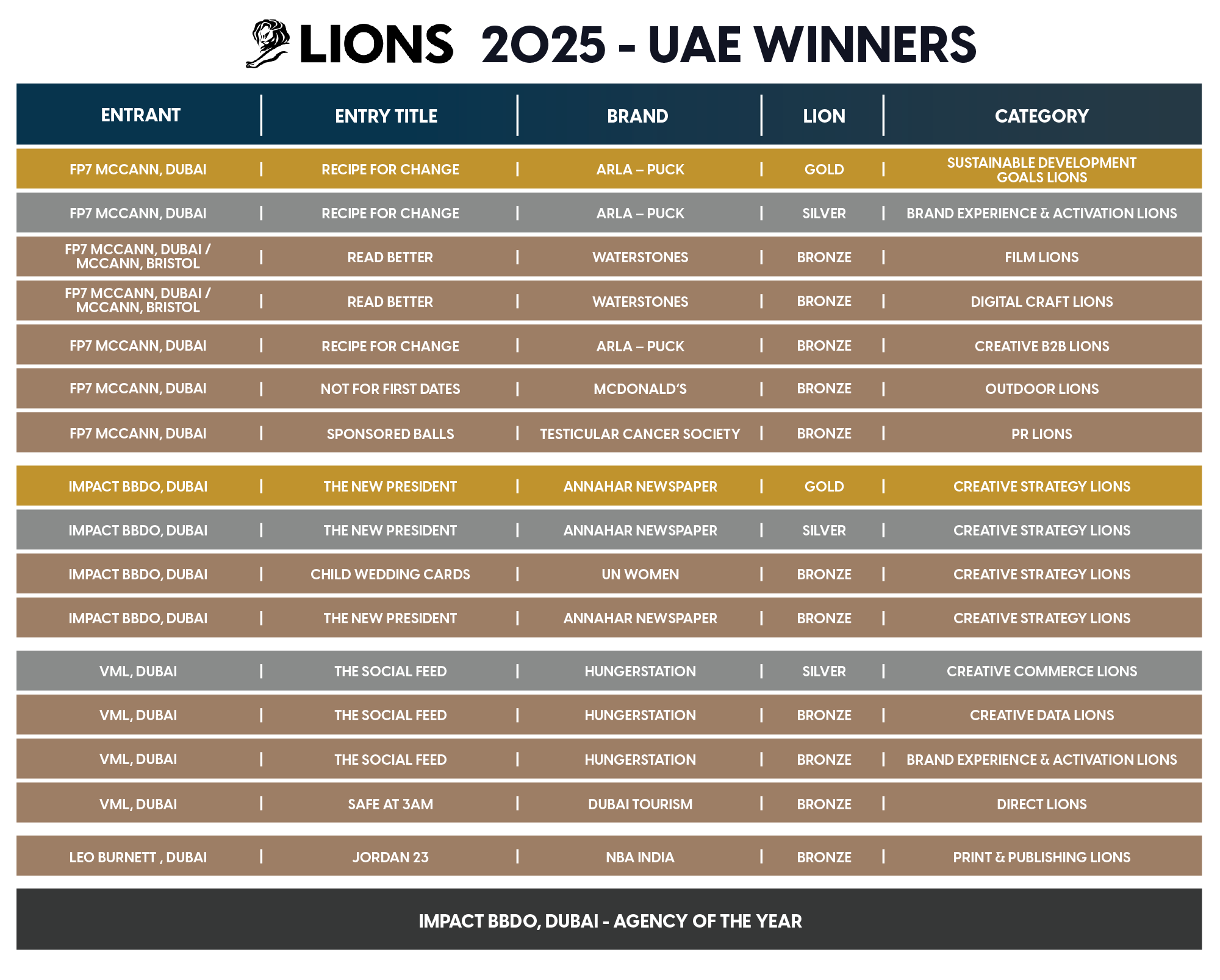
The complete details of these winning works can be found at Lions – The Work.
Talking about the conclusion of yet another successful year, Simon Cook, CEO, LIONS said “This week we’ve taken our industry on an exhilarating journey of the very best creative work. Huge congratulations to each and every brilliant winner and shortlist for the phenomenal recognition bestowed by peers. This is a time for immense pride as we celebrate the transformative power of breakthrough ideas that challenge conventions, solve problems and create meaningful connections.”
The festival also saw UAE participation in development programs. Maria Salameh and Mayjane Najjar from Zenith Media represented the UAE at the Media Category Young Lions Competition, while Francesco Negri and Diego Fernández from FP7 McCann participated in the Digital Category Young Lions Competition. Asmaa Nowbandi from American University in Dubai represented the UAE at the Roger Hatchuel Academy.
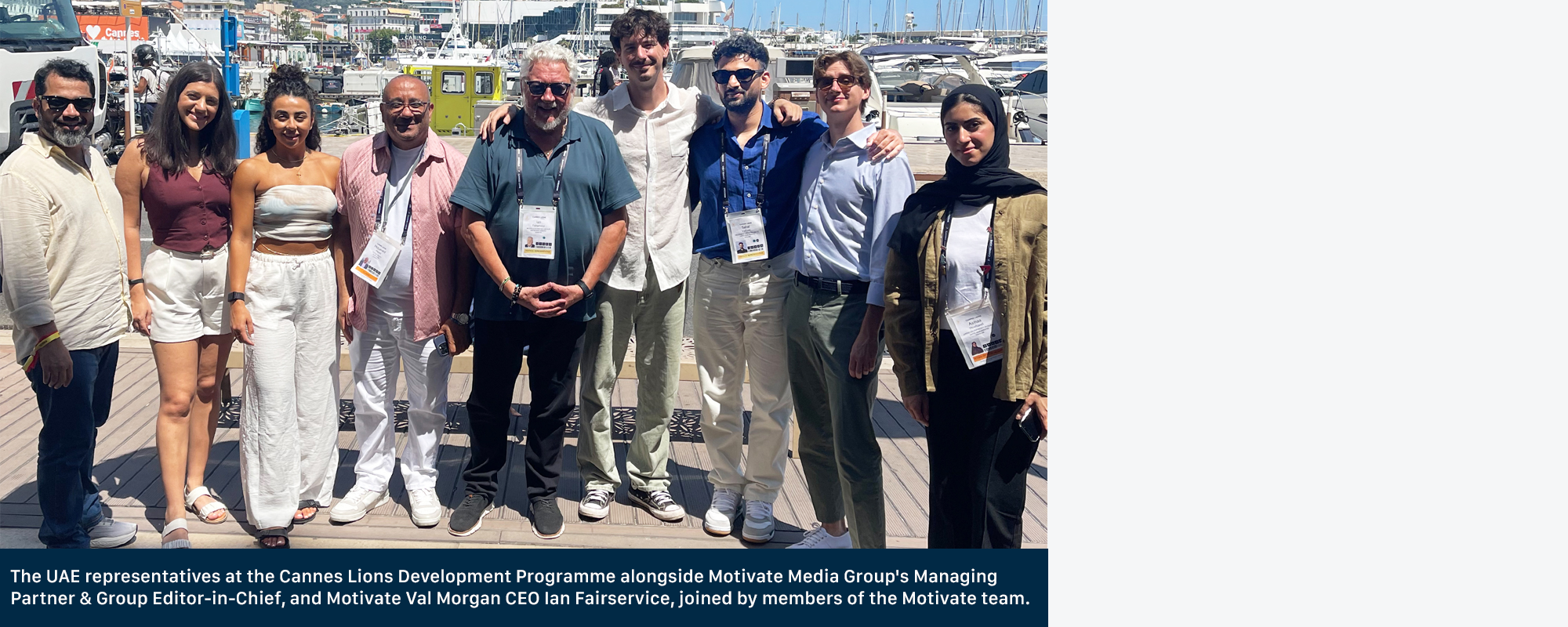
As the official representatives of the Cannes Lions International Festival of Creativity in the UAE, Motivate Media Group and Motivate Val Morgan congratulate all winning agencies, jury members, and young representatives who represented the UAE at this year’s festival.
The results reflect the continued development of UAE agencies in producing work that performs well on the international stage. We look forward to supporting our creative community as they prepare for Cannes Lions 2026.
DC’s Superman is one of the most anticipated movies of 2025, and with just days to its worldwide release, brands are jumping on the bandwagon to capture the attention of a diverse audience set to show up for the movie. With limited spots available, there’s still a chance for your brand to book your spot. Download our Big Screen Brief to know the reasons to advertise alongside Superman.
With that said, most of us only know Superman from DC. The question is: what’s coming next after Superman? James Gunn and Peter Safran have been rebuilding the DC Universe with a massive multi-chapter plan, starting with “Chapter One: Gods and Monsters” – a coherent, hopeful slate that “highlight love, compassion, and the innate goodness of the human spirit.”
The first domino falls this July with Superman, which Gunn calls “the true foundation of our creative vision.” But that’s just the beginning. Here’s your complete guide to every confirmed DCU film coming to theaters with all the juicy details we know so far. If you’re curious about the upcoming DCU movies, keep reading.
This is where it all begins. Superman isn’t just another Superman movie – it’s the cornerstone that everything else will build upon. James Gunn is directing this one himself, and he’s made it clear that this film will set the tone for the entire new DCU. Expect a younger Superman in a world that’s already populated with heroes, marking a fresh start that promises to be both familiar and completely new.
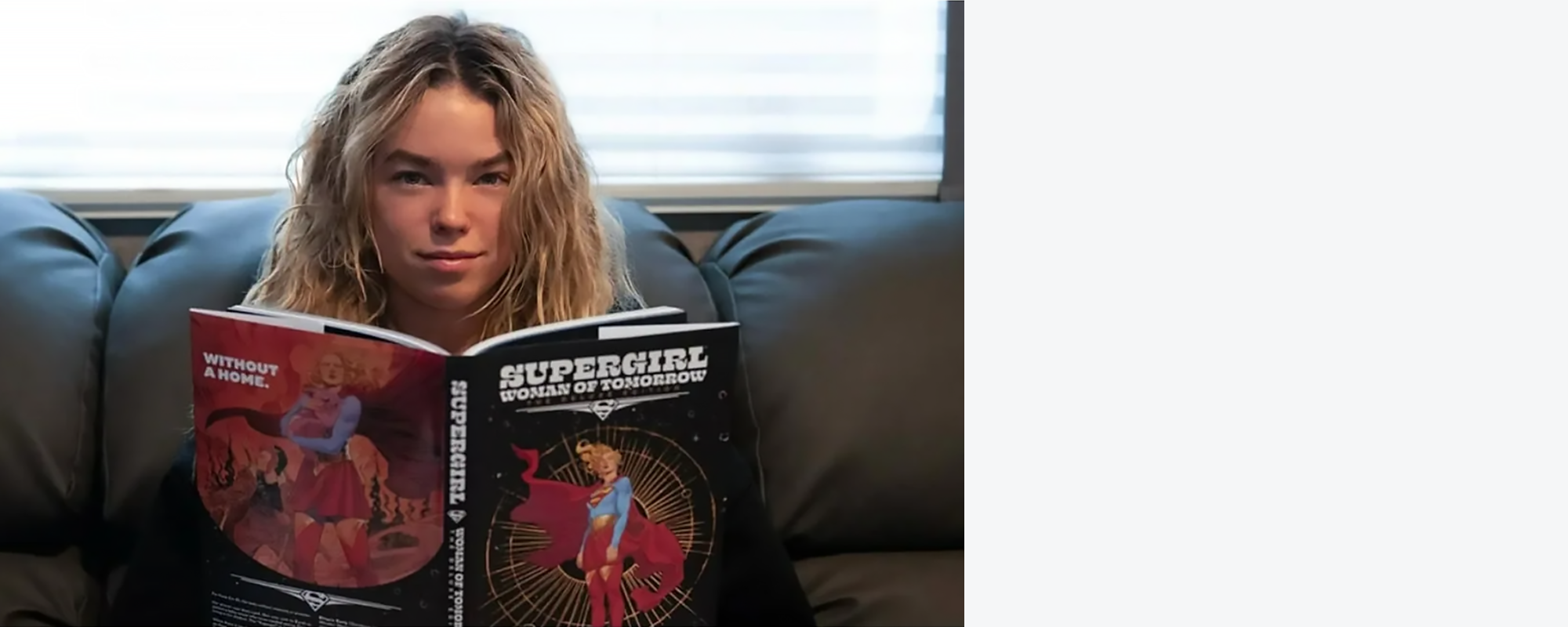
Starring: Milly Alcock as Kara Zor-El
Director: Craig Gillespie
Speaking of that world full of heroes, Superman won’t be the only Kryptonian around for long. House of the Dragon’s Milly Alcock steps into the cape for what DC is calling a “science fiction adventure” that promises an unexpectedly different take on Kara Zor-El. Based on Tom King’s acclaimed graphic novel, this isn’t your typical Supergirl story.
Here’s the twist: while Superman was raised on Earth, Kara grew up on a Kryptonian chip in space, creating a much grittier character than we’ve seen before. And get this – Jason Momoa makes his DCU debut as Lobo, the intergalactic bounty hunter. Craig Gillespie (the genius behind I, Tonya) is directing, and production was already halfway complete by early 2025, so this one’s definitely happening.

Writer: Mike Flanagan
In a bold move, DC is giving the shape-shifting Batman villain his very own movie. Mike Flanagan, the master of psychological horror behind Doctor Sleep and The Haunting of Hill House, is crafting the script for what will be the DCU’s first villain-centric film.
While plot details are still under wraps (and no director or cast has been announced), imagine what Flanagan could do with a character who can literally become anyone or anything. This could be the horror-superhero crossover we never knew we needed in the lineup of upcoming DCU movies.
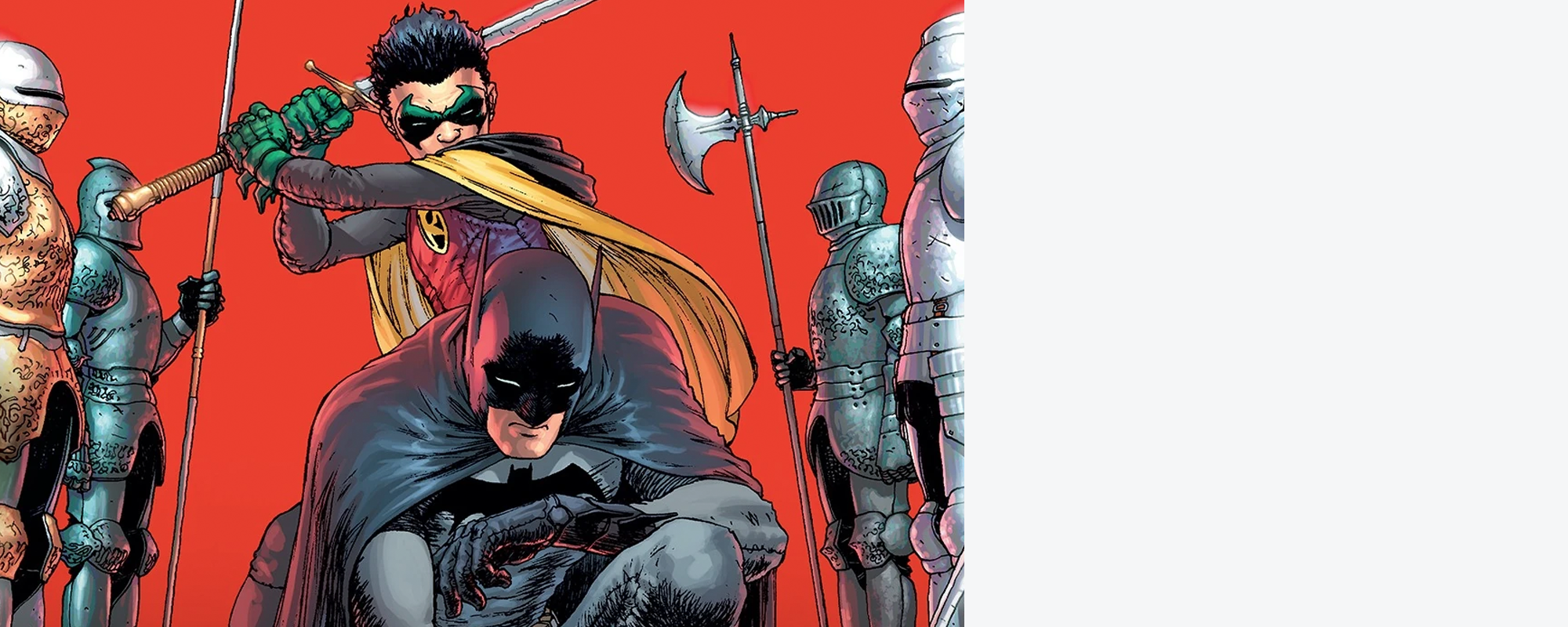
Focus: Batman and Robin (Damian Wayne)
Where there’s a Batman villain, Batman himself can’t be far behind. This “unusual father-son story” will introduce an entirely new DCU Batman alongside Damian Wayne as Robin. Inspired by Grant Morrison’s comics, the film centers on Bruce Wayne discovering he has a son – and it’s going to be, in Gunn’s words, “very strange.”
Important note: this is completely separate from Matt Reeves’ Batman films, which exist in their own continuity. No release date or casting announced yet, but this promises to explore the Dark Knight from a completely fresh angle.
This version of Batman exists separately from Matt Reeves’ ongoing “Elseworlds” trilogy starring Robert Pattinson.

Director: James Mangold
The final film of Chapter One takes us into gothic horror territory. Logan director James Mangold is attached to direct this investigation into the “dark origins of Swamp Thing.”
While Gunn admits the project is “far from going” and they’ve only discussed it occasionally, having Mangold involved suggests they’re serious about making this something special. No cast or schedule has been revealed yet, but it remains one of the most intriguing upcoming DCU movies.
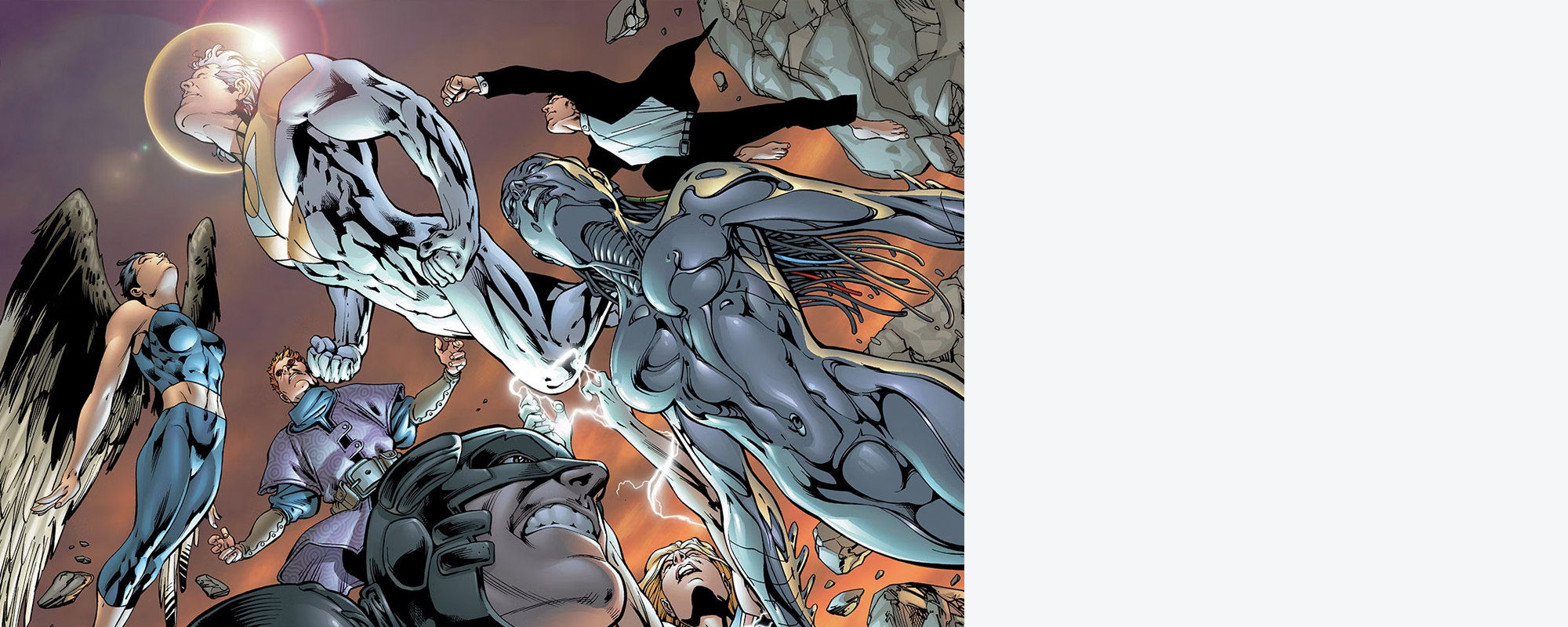
Focus: WildStorm superhero team
Here’s where things get really interesting. The Authority brings WildStorm’s brutal superhero team into the DCU – think The Boys (Amazon Prime Video), but actually part of the main universe. These are heroes who “take matters into their own hands to do what they believe is right” when government agencies aren’t enough.
The Engineer will first appear in Superman, setting up this team’s origin story. No release date, director, or cast announced, but this could be the edgiest film in the entire slate.
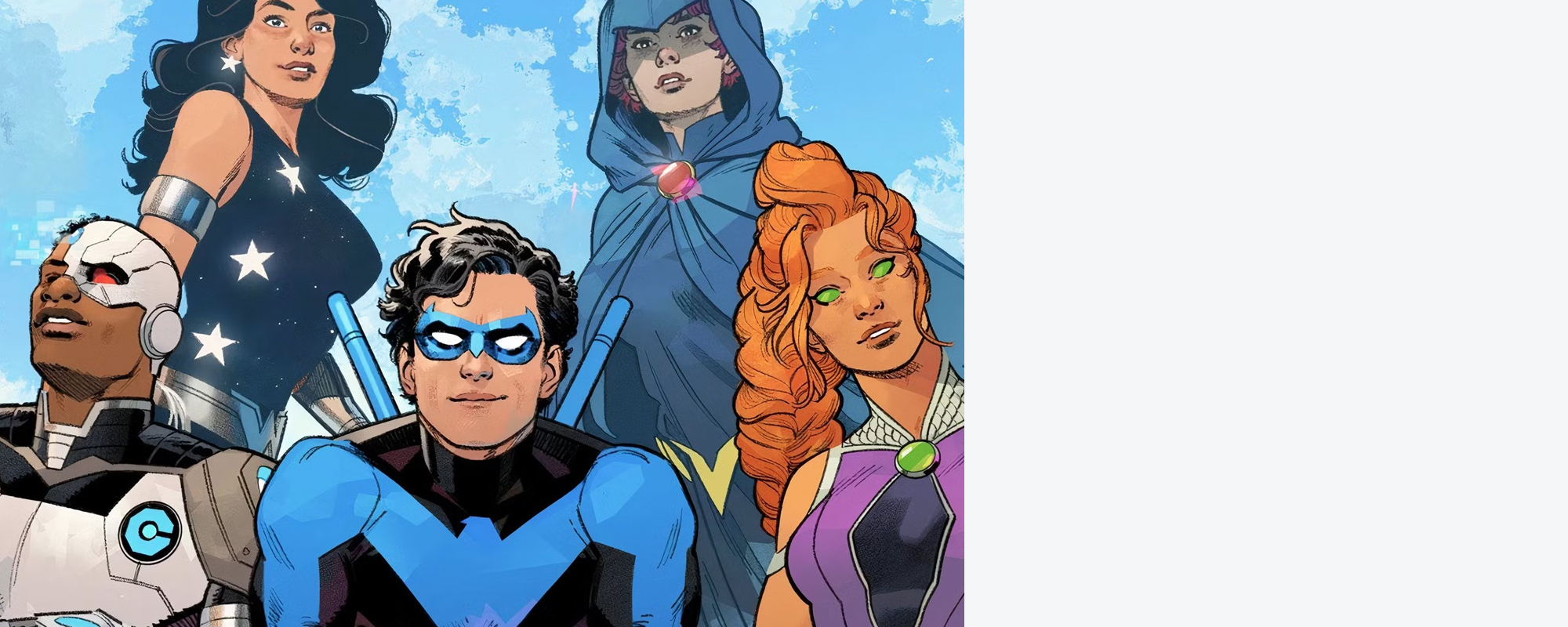
Writer: Ana Nogueira
From one team to another, but with a completely different vibe. The beloved young superhero team is getting the live-action treatment as the sixth team-up film in the DCU slate. Ana Nogueira (who also wrote Supergirl: Woman of Tomorrow) is handling the script, and reports suggest the core lineup – Robin, Cyborg, Starfire, Raven, and Beast Boy – will all feature.
Beyond that, details are still under wraps, but fans have been waiting years for a proper live-action Titans movie. It’s one of the most anticipated upcoming DCU movies for younger audiences.
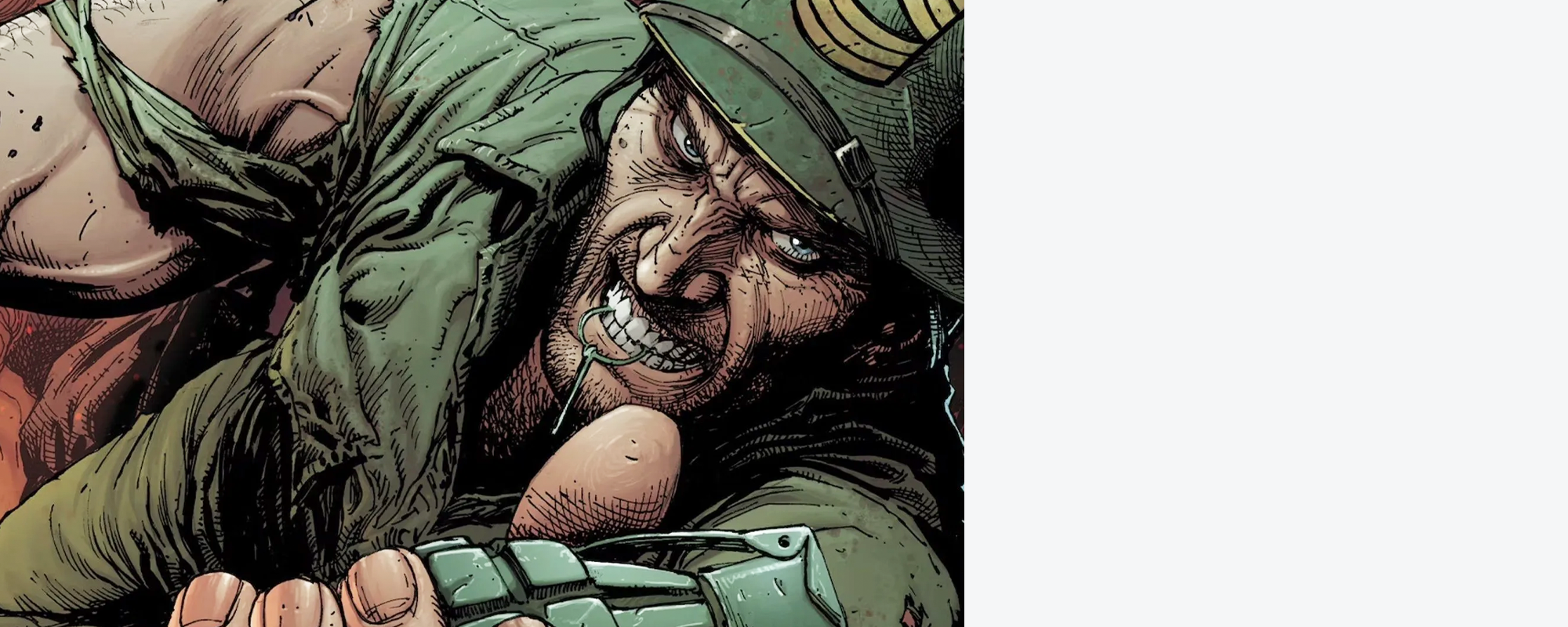
Starring: Colin Farrell
DC’s World War II infantryman is getting his own movie, proving this universe isn’t just about people in capes. The project hit a brief snag when original star Daniel Craig departed in early 2025, but Colin Farrell (fresh off his acclaimed turn in The Penguin) has stepped in as the new lead.
How exactly a WWII soldier fits into a superhero universe remains to be seen, but that’s part of what makes this reboot so intriguing.
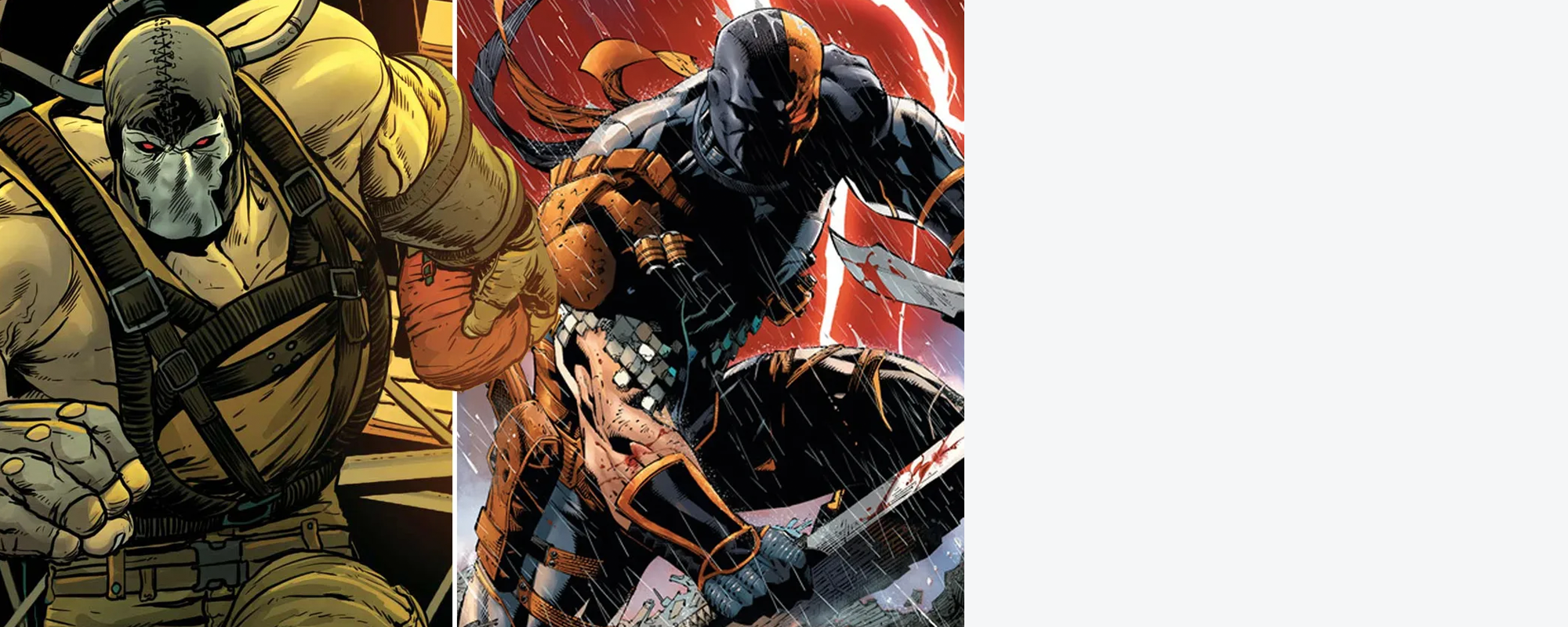
Writer: Matthew Orton
Perhaps the most unusual entry on the slate: a villain team-up movie pairing two of DC’s most formidable anti-heroes. The Hollywood Reporter revealed this project in September 2024, promising to explore the “unusual dynamic” between these two characters.
Moon Knight writer Matthew Orton is crafting the script, but beyond that, everything is still a mystery. Could be a twisted buddy cop movie, could be something completely different.
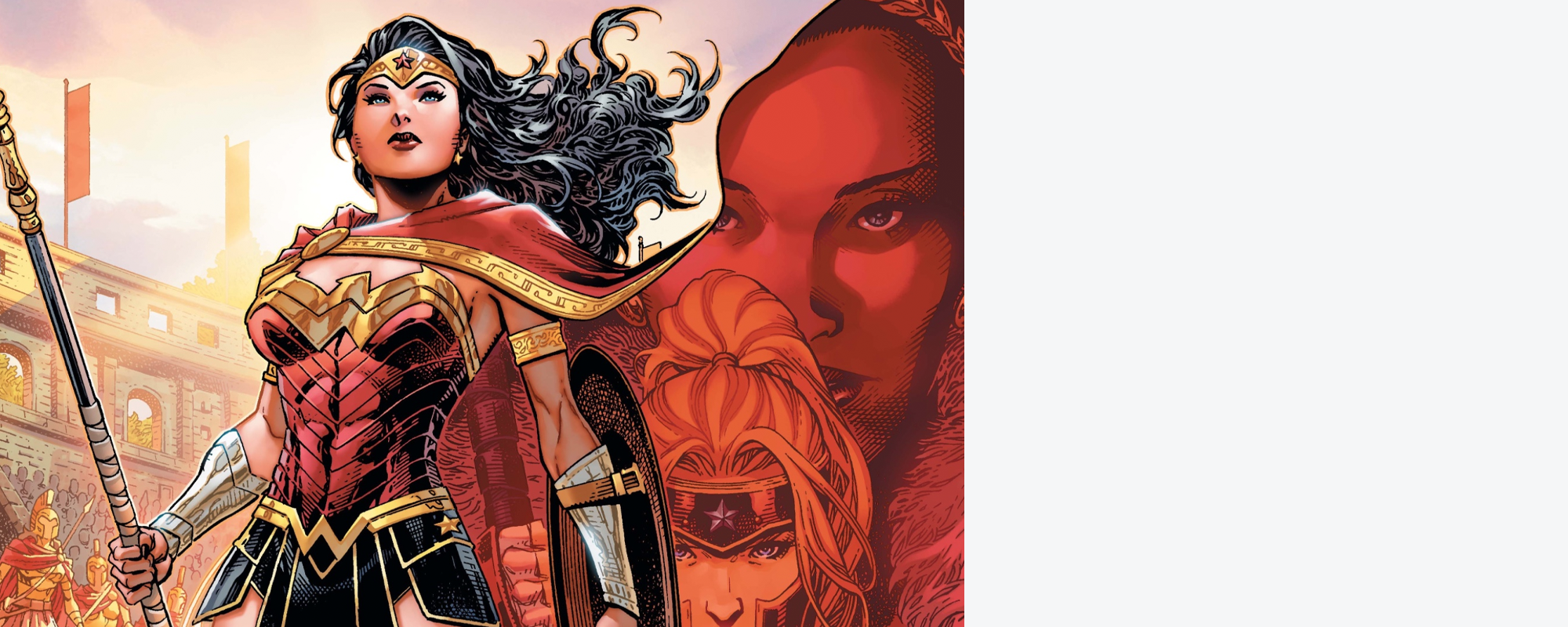
Status: Script in development
A new Wonder Woman film is confirmed for the DCU, but don’t expect Gal Gadot to return. James Gunn has confirmed the movie is “being written right now,” and WBD leadership considers Wonder Woman one of their “big asset builders” for the next decade.
This will be a complete reboot with new casting, but official details about director, cast, or plot are still minimal. Still, it remains a key part of the studio’s plan for upcoming DCU movies.
All of these films are part of Gunn and Safran’s unified vision for Chapter One: Gods and Monsters. Unlike the previous fragmented approach, this is designed as a single, interconnected continuity with consistent characters and themes building toward a larger six-year plan.
The goal is ambitious: create a hopeful, character-driven saga that introduces us to “a younger Superman in a world full of heroes” while weaving together cohesive stories that will also connect to new Max/DC Universe TV shows.
Will it work? Superman this July will give us our first real taste of whether this new DCU can deliver on its promises. But if the early signs are any indication, DC might finally have a plan that can give Marvel some serious competition.
Sources: DC.com, The Direct, Rotten Tomatoes, Games Radar, Screen Rant
A report from the SAWA-hosted session on the power of big screen storytelling at Cannes Lions 2025
When filmmaker Gurinder Chadha OBE stepped onto the Cannes Lions stage alongside SAWA President Katharine Jacob OBE, she brought with her a powerful statistic that would define their 30-minute conversation. Since the release of Bend It Like Beckham in 2002, female football registrations in the UK have exploded from 50,000 to over 800,000.
“That’s not just entertainment,” Chadha said during the session titled “Changing Minds: Shift Global Perspectives Through Big-Screen Storytelling.” “That’s cinema changing the world.”
For Chadha, who grew up “yearning to see people who looked like me on screen center stage, as opposed to on the margins,” cinema represents something profound: the ability to reshape how entire societies think and feel. But what makes the big screen uniquely powerful isn’t just the stories it tells—it’s how those stories are experienced.
“Seeing a film in a collective space is that reminder of the universality of emotions and who we are,” Chadha observed. This shared viewing experience, where diverse audiences come together in a single space, creates a unique opportunity for perspective-shifting that other media simply cannot replicate.
Jacob, drawing on her extensive background in cinema advertising, reinforced this point by highlighting how the big screen environment amplifies every message. When stories reach audiences in this immersive, collective setting, they don’t just reflect culture—they actively create it.
Central to Chadha’s approach is a sophisticated understanding of audience psychology that has direct relevance for anyone crafting messages for the big screen. “I always start with the perspective of the audience,” she explained. “What is the audience thinking? How am I going to shift their opinions? I know what you’re expecting, and then I change it, and I shift it.”
This technique of meeting audiences where they are before challenging their assumptions proved transformative for Bend It Like Beckham. Rather than depicting the typical “immigrant rebellion” narrative, Chadha showed a supportive Sikh family encouraging their daughter’s dreams. By subverting expectations, she normalized what audiences initially saw as foreign or different.
“My job is to reach out to your heart, to help you feel heard, feel alive and make you rethink what is around you,” Chadha said, articulating a mission that extends far beyond entertainment.
Chadha’s insights proved particularly relevant when the conversation turned to today’s fragmented media landscape. In an era where audiences can skip, scroll, or click away in seconds, the challenge for all content creators—whether filmmakers or advertisers—has intensified.
“Our job as creatives is even harder now,” Chadha noted. “We need to surprise the audience.” For advertising specifically, she emphasized the need for “a twist in there to stop people’s [skipping] and go, ‘Oh, I love this.'”
The parallel between effective filmmaking and effective advertising became clear: both require authentic storytelling that connects emotionally while challenging preconceptions. Both benefit from the unique power of the cinema environment to create shared, immersive experiences.
Throughout the session, both speakers emphasized that authentic representation isn’t merely a moral imperative—it’s strategic storytelling. When audiences see themselves reflected authentically in stories, they feel “heard” and become more receptive to the messages being conveyed.
For Chadha, this representation serves a larger purpose: “Cinema allows you to change the world.” By “bringing you into the home” of cultures unlike your own, cinema builds empathy and understanding across differences. Professional athletes have credited her films with inspiring their careers, demonstrating how big-screen storytelling can create real-world change.
The session, part of Cannes Lions’ Changemakers track, underscored a crucial point for anyone working in advertising: the medium shapes the message. The cinema environment—with its scale, immersion, and collective viewing experience—amplifies the impact of every story told there.
As Jacob and Chadha’s conversation revealed, cinema’s power lies not just in its ability to entertain, but in its capacity to shift perspectives, challenge assumptions, and inspire action. For brands and storytellers alike, the big screen offers something increasingly rare in our fragmented media world: the chance to create shared experiences that genuinely change how people think and feel.
Chadha left a lasting note on cinema’s power to shape the world—an enduring reminder that messages on the big screen carry both influence and the ability to change perspectives.
This session was hosted by SAWA (the global cinema advertising association) at Cannes Lions Festival of Creativity 2025. SAWA represents cinema advertising companies worldwide, including Motivate Val Morgan in the Middle East.
Summer Box Office 2025 data reveals cinema set to dominate GCC marketing landscape with record-breaking audience numbers and premium engagement.
Cinema endures as the most popular form of ‘away from home’ entertainment, providing scale and engagement in a brand-safe environment for advertisers. As the summer heat builds across the region, movie theaters are emerging as the “coolest” destination for both audiences and smart marketers.
The early indicators for summer 2025 are nothing short of spectacular. Mission Impossible UAE 2025 opening reached an impressive $3.6 million, securing the region’s position among the top 10 global markets and claiming the number one position locally.
Globally, the weekend of May 22-25 delivered extraordinary results. Disney’s Lilo & Stitch and Paramount’s Mission: Impossible – The Final Reckoning combined for a remarkable $545.7 million worldwide opening, setting the stage for an exceptional summer season. The momentum continued through their third week, with both films maintaining strong holds and adding an estimated $677 million globally, bringing their combined three-week total to approximately $1.22 billion – proving that quality content sustains audience engagement well beyond opening weekend.
The success extends beyond standard screenings. IMAX delivered franchise-best numbers for Mission: Impossible with $53.2 million globally through three weeks, while Lilo & Stitch drew families to premium large format presentations. This reinforces growing audience preference for enhanced experiences, with 77% of moviegoers now favoring IMAX, Dolby and other PLF Cinema formats according to the Fandango Moviegoing Trends & Insights Study Spring 2025 .
The reasons behind summer’s dominance are crystal clear in the latest consumer insights. According to the Fandango, an overwhelming 83% of all moviegoers are planning to beat the summer heat by heading to the theater. But it’s not just about escaping the heat—audiences are actively seeking diverse experiences, with 78% interested in seeing a variety of movie genres in theaters over the summer—up from 68% in the previous year, showing a growing interest in moviegoers actively wanting to diversify their cinematic experiences.
The appetite runs deep. 66% of all moviegoers are planning to see four or more movies in theaters across the upcoming summer period — with the numbers rising to 69% among Gen Z. This proves that it isn’t casual entertainment consumption; it’s committed engagement with the in-cinema medium.

Fandango Moviegoing Trends & Insights Study Spring 2025 findings are based on extensive research encompassing more than 5,000 moviegoer responses from primary North American markets, with trends reflecting broader international cinema consumption behaviors.
The summer lineup reads like a marketer’s dream slate of audience magnets, spanning blockbuster franchises, beloved reboots, and regional favorites:
Download our Q3 2025 ScreenTalk Movie Planner for the full list of movies releasing this summer and throughout Q3 2025.
With this exceptional lineup, premium audience engagement, and record-breaking early performance, summer 2025 is shaping up to deliver unprecedented opportunities for advertisers to connect with captivated audiences in the most immersive advertising environment available.
Looking beyond summer into the broader landscape of 2025, the theatrical pipeline has never been stronger. Hollywood Studios are unveiling roughly 110 movies this year, at least 15 more than they did in 2024—the highest number since 2020 and a 16% increase from the previous year, according to the National Association of Theatre Owners. For this region adding this with the ever-rising popularity of Arabic films and Asian movies and absence of any big sports event makes 2025 as the best year for cinema.
Summer Box Office 2025 delivers unprecedented opportunities with 83% of moviegoers heading to theaters, creating the largest captive audience for brand-safe advertising in the region.
Mission Impossible ($3.6M regional opening) and Disney’s Lilo & Stitch are the primary drivers, with their combined three-week $10.8 million performance.
Mission Impossible UAE 2025 opening reached an impressive $3.6 million, securing the region’s position among the top 10 global markets and highlighting the Middle East’s growing cinema influence.
The weekend of May 22-25, 2025, delivered a spectacular reminder of cinema’s enduring power. Disney’s Lilo & Stitch and Paramount’s Mission: Impossible – The Final Reckoning combined for an extraordinary $545.7 million global opening, setting the stage for an exceptional summer season.
Lilo & Stitch surfed to a remarkable $341.7 million global debut, claiming the third-highest Disney Live Action opening weekend ever—trailing only to The Lion King and Beauty and the Beast. The film’s success story extends far beyond traditional expectations, with the $100 million production—originally destined for Disney+ before receiving a theatrical upgrade.
What makes this performance particularly impressive is the film’s demographic reach. According to THR, rather than relying solely on families, Lilo & Stitch captured 60% of its domestic audience from non-parent demographics, driven largely by Gen Z and millennial women who grew up with the 2002 animated original. This cross-generational appeal translated into robust international numbers, with $158.7 million from overseas markets, including dominant performances in Mexico, the UK, and Brazil.
Tom Cruise continues to defy both gravity and industry expectations with Mission: Impossible – The Final Reckoning launching to $204 million worldwide. The eighth installment in the franchise achieved series-best numbers globally, collecting $127 million overseas alongside strong domestic performance, surpassing previous franchise record-holder Mission: Impossible – Fallout.
Early audience reception has been positive, with an A- CinemaScore and strong critical reviews praising the film’s practical stunts and emotional storytelling.
The Middle East emerged as a crucial contributor to both films’ success. The UAE ranked among the top 10 markets for Mission: Impossible, with the Tom Cruise vehicle claiming the number one position in the region. Meanwhile, Lilo & Stitch demonstrated strong family appeal across Gulf markets, contributing significantly to Disney’s international haul.
This regional performance underscores the Middle East’s growing importance in the global cinema ecosystem. With the regional market projected to reach $3.44 billion by 2033, driven by young demographics and expanding urban centers, the weekend’s results demonstrate audiences’ appetite for premium theatrical experiences and blockbuster content across all genres.
Both films benefited from premium large format presentations, with IMAX delivering franchise-best numbers for Mission: Impossible ($31M) while Lilo & Stitch attracted families to premium screens. This trend reinforces the industry’s strategic pivot toward enhanced experiences that differentiate theatrical viewing from home streaming.
For cinema advertisers, this weekend demonstrated the power of diverse audience appeal. The success across demographics—from nostalgic millennials to action enthusiasts—created multiple engagement touchpoints. Lilo & Stitch’s family-plus-adult appeal and Mission: Impossible’s premium audience proved cinema’s unique ability to deliver both mass reach and targeted demographics in a captive, premium environment.
The weekend’s triumph establishes momentum for what industry analysts predict could be the most robust summer season since before the pandemic. The upcoming slate includes:
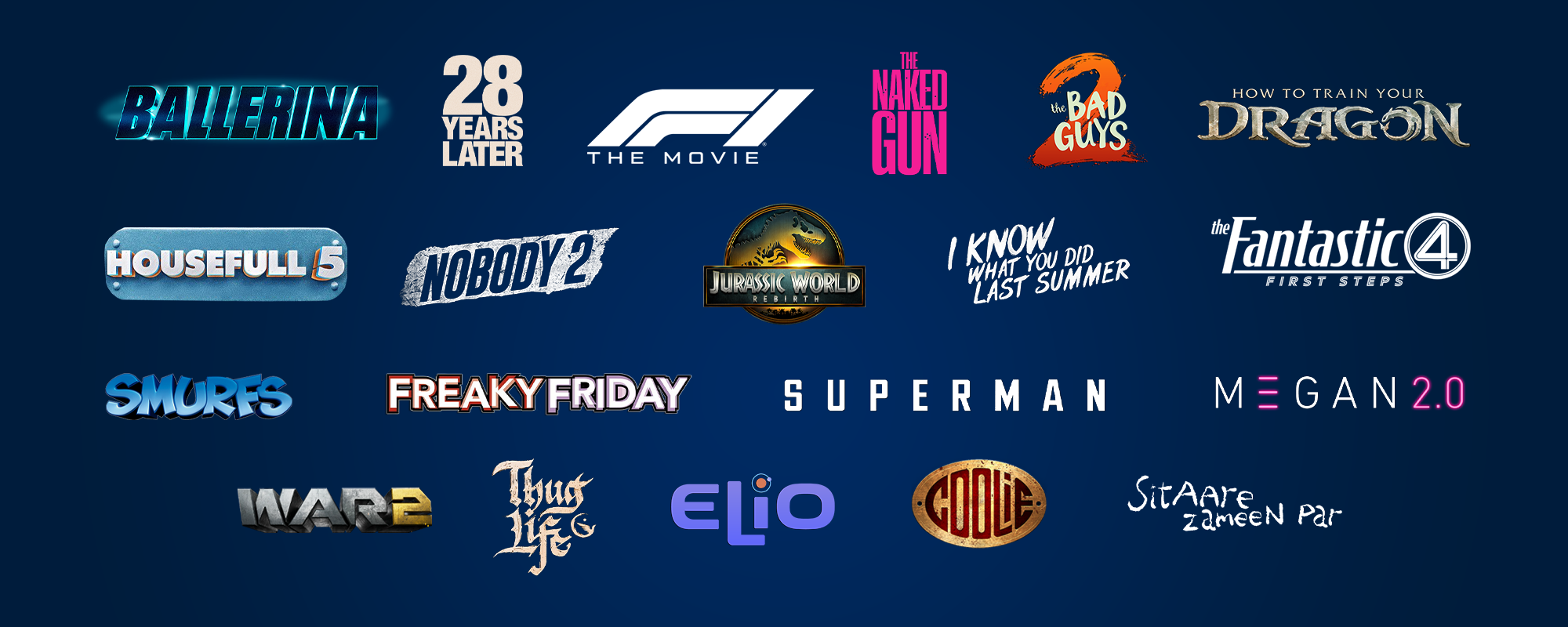
The combination of franchise filmmaking, premium experiences, and global appeal demonstrates that when Hollywood delivers quality content, audiences respond enthusiastically across all markets. Both films proved that theatrical experiences remain irreplaceable—whether through nostalgic emotional connections or breathtaking practical stunts.
The message is clear: cinema remains irreplaceable, and summer 2025 is positioned to be one for the record books, offering unprecedented opportunities for both exhibitors and advertisers to connect with engaged global audiences.
Sources: Deadline, Box Office Mojo, The Hollywood Reporter
VOX Cinemas has launched ‘Fall in Love with Film,’ a comprehensive brand campaign featuring an exclusive original score by two-time Academy Award winner Hans Zimmer. The initiative represents a strategic evolution in experiential marketing, positioning the cinema chain’s emotional connection with audiences at the center of its brand narrative.
The partnership with Zimmer marks a significant investment in brand differentiation for VOX Cinemas, which has operated across the Middle East for 25 years. The composer’s score blends traditional Arabic instruments with Hollywood orchestration, creating what he describes as “a sound that was cinematic at its core, but unmistakably VOX.”
Zimmer’s involvement extends beyond a typical commercial collaboration. “VOX has truly pioneered the cinema experience in the Middle East—a region that is very close to my heart—and I wanted to reflect the role they’ve played in shaping people’s most cherished memories,” Zimmer stated.
The campaign’s execution demonstrates a sophisticated understanding of touchpoint marketing. Beyond screening the brand film in cinemas across the region, VOX has integrated Zimmer’s score throughout the entire customer experience—from lobby atmospheres to customer service calls. This multi-sensory approach creates consistent brand reinforcement at every interaction point.
“The true heart of our story is our customers. For years, they’ve trusted VOX as the place where memories are made—where laughter, love, and even quiet reflection come to life,” said Ignace Lahoud, CEO of Majid Al Futtaim – Entertainment. “This brand video is a tribute to that relationship.”
The campaign rollout spans eight regional markets: UAE, Saudi Arabia, Kuwait, Bahrain, Egypt, Oman, Qatar, and Lebanon. VOX has developed localized versions in English, Gulf Arabic, Egyptian Arabic, and Saudi dialect, ensuring cultural relevance across diverse audiences while maintaining campaign cohesion.
‘Fall in Love with Film’ positions VOX Cinemas as more than an entertainment venue—it establishes the brand as a cultural institution integral to personal milestones and shared experiences. The campaign narrative follows generational connections to cinema, emphasizing VOX’s role in creating lasting memories across families and communities.
This strategic positioning differentiates VOX in an increasingly competitive entertainment landscape, where traditional cinema competes with streaming services and digital entertainment options. By emphasizing emotional connection and premium experiences, VOX strengthens its value proposition for both consumers and advertising partners.
The integration of world-class artistic collaborations into cinema branding represents an emerging trend in experiential marketing. Such initiatives demonstrate how premium content partnerships can enhance the overall cinema environment, creating elevated experiences that benefit both audiences and advertising partners alike.
As the entertainment industry continues to evolve, campaigns like ‘Fall in Love with Film’ showcase the potential for cinema operators to leverage artistic partnerships in strengthening their cultural relevance and market positioning.
Source: VOX Press Release
UAE creative talent shines as ten professionals join the Cannes Lions 2025 Shortlisting Jury, cementing the nation’s growing influence on global creativity
Cannes Lions has announced the panel of ten shortlisting jury members from the UAE who will participate in the initial judging phase for this year’s Cannes Lions awards, set to take place in Cannes, France, from June 16-20, 2025.
This announcement follows the earlier revelation of sixteen awarding jury members from the UAE, bringing the total representation to a record twenty-six professionals from the Emirates who will contribute to setting the global benchmark for creative excellence at this year’s Festival.
These ten shortlisting jurors will join experts from across 79 markets, representing the global industry’s leading talent from a diverse range of disciplines, with markets including Azerbaijan, Bosnia and Herzegovina, Iceland, and Mongolia represented on the Shortlisting Jury for the first time.
Simon Cook, CEO, LIONS, said: “All our Jurors play a crucial role in shaping the work awarded at Cannes Lions. This year, we are seeing an unprecedented level of global engagement from deserving talent, with more markets, more voices, and more perspectives coming together to recognise the global benchmark. I’d like to extend my gratitude for their hard work and care in curating the work that will go on to set the global standard and make history.”
Regarding the UAE representation, Ian Fairservice, Managing Partner of Motivate Media Group, and CEO of Motivate Val Morgan said: “The selection of shortlisting jury members from the UAE, contributing to our record total representation across both juries this year, marks a significant milestone for our creative community. The incremental representation each year reflects the maturity of our creative industry and its increasing recognition internationally. I am sure these talented individuals will bring their unique perspectives to the judging process, ensuring the UAE’s voice helps shape global creative standards.”
Brand Experience & Activation: Sarah Berro | Head of Creative, Vice Media, MEA
Creative Strategy: Catherine Bannister | Chief Strategy Officer, TBWA RAAD, MENA
Direct: Martino Caliendo | Associate Creative Director, Impact BBDO, UAE
Film Craft: Nayla Chacra | Head of Post Production and Executive Producer, Prodigious, Global
Media: Lara Arbid | CEO, Initiative and Magna Global, MENAT
Media: Daniel Shepherd | Group Chief Strategy Officer, Omnicom Media Group, MENA
Outdoor: Michele De iuliis | Associate Creative Director, Havas Middle East, United Arab Emirates
PR: Peter Jacob | Managing Director, MENAT, Current Global, MENAT
Social & Creator: Estelle Khayat | Associate Strategy Director, Leo, MENA
Social & Creator: Mohammed Ajawi | Director of Digital Experience, Ogilvy, UAE
Further information on this year’s Festival and the Lions Awards can be found at visit www.canneslions.com.
Motivate Media Group and Motivate Val Morgan are the official representatives of the Cannes Lions International Festival of Creativity in the UAE.
Source: Cannes Lions Press Release